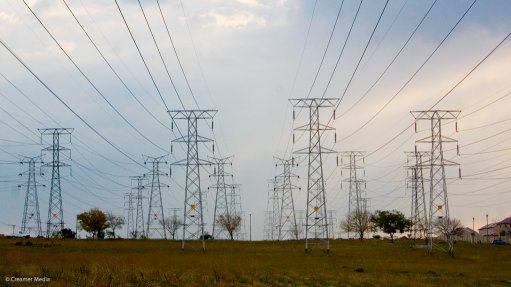
Photo by: Duane Daws
The South African government has been ranked thirty-third out of this year’s top 500 global infrastructure owners, up two places from last year with a 0.55% increase in its infrastructure assets to $81.03-billion, as measured by reported net tangible fixed assets.
Three other local entities made this year’s list, including State-owned power utility Eskom, ranked at 142 with infrastructure assets worth $31.25-billion; petrochemicals major Sasol, listed at 357 with infrastructure assets worth $15.35-billion; and State-owned freight transport group Transnet at 376 with infrastructure assets worth $14.71-billion.
This was according to global software developer Bentley System’s Infrastructure 500 list, which ranked the top owners of infrastructure worldwide from both the public and private sectors.
Published yearly, the list made it possible to readily compare investment levels across different types of infrastructure, regions of the world and public and private organisations, providing industry stakeholders with an understanding of the dollar value of assets owned by some of the world’s top owner-operators.
Bentley Systems global infrastructure owners senior VP Ted Lamboo explained to Engineering News Online on the sidelines of the company’s 2015 Year in Infrastructure Conference that, as the list represented asset ownership, several countries’ governments ranked among the world’s top infrastructure owners.
“In some countries, however, such as in the US, the infrastructure is not owned by the government – it is privatised. Therefore, the value of those assets are not counted as part of the US government’s asset ownership, but to a utility.”
For this reason, State-owned entities, such as Eskom and Transnet, made their way onto Bentley’s list of top global infrastructure owners.
“Eskom is a monopoly, whereas, in other parts of the world, electricity is separated between transmission and distribution. In Europe, it is separated by law and the distribution market is a competitive one. Therefore, there are deliberately multiple offers of electricity generation and distribution and one can buy power from different companies,” noted Lamboo.
He added that South Africa was, therefore, unique, as Eskom covered power generation and distribution for the entire nation, “putting two very big clusters of assets together”.
Lamboo further pointed out that Eskom was also well exposed in other African countries, which counted towards its $31.25-billion infrastructure asset portfolio.
Bentley Systems compiled the Bentley Infrastructure 500 to help global constituents appreciate and explore the magnitude of investment in infrastructure and the potential to continually increase constituents’ return on that investment.
The rankings made it possible to readily compare investment levels across types of infrastructure, regions of the world and public and private organisations.
The combined value of the 500 entities listed in the 2015 Bentley Infrastructure 500 exceeded $16.2-trillion, which was close to the US’s 2014 gross domestic product (GDP) and more than the combined 2014 GDPs of China and Japan.
The US government again topped this year’s list, with an infrastructure value of $375.4-billion, up from $360.9-billion in 2014.
Second and third on the list were US-based global oil giant Exxon Mobil Corporation and Brazil-based oil giant Petrobras, with infrastructure assets valued at $252.67-billion and $218.78-billion, respectively.
The world’s biggest natural gas producer, Russian open joint stock company Gazprom dropped two places from second to fourth on this year’s list, with infrastructure assets worth $193.07-billion, down by a significant 22% from last year’s $248.4-billion.
The Top 500 list includes public- and private-sector entities with financials reported in the past three years to allow for flexibility in varying reporting schedules. The values presented were assessed net of depreciation and amortisation and calculated to exclude, where data was available, assets not representative of infrastructure, such as equipment, furniture and software.
Bentley Systems provides comprehensive software solutions for sustainable infrastructure for architects, engineers, geospatial professionals and owner-operators worldwide.
Samantha Herbst was a guest of Bentley Systems at the 2015 Year in Infrastructure Conference in London, UK.